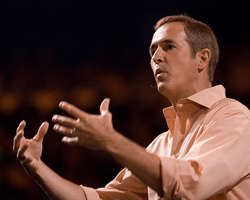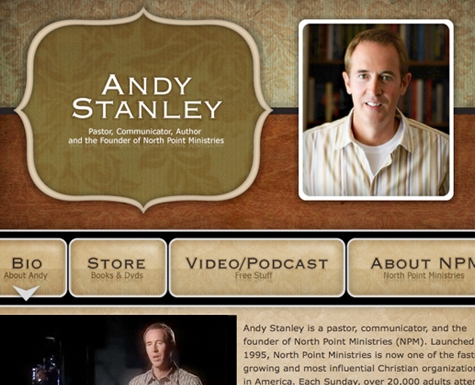Andy Stanley, from North Point Community Church in Alpharetta, GA, is next up in my series on the 2010 Willow Creek Global Leadership Summit. The subject matter was foreign to me, as I have always tended toward resolving tensions and keeping my personal space a “zero drama zone.” I was pretty proud of my problem solving conflict resolution skills. Apparently, I had something important to learn.
Andy began by stating that in every organization there are problems that shouldn’t be solved and tensions that shouldn’t be resolved. My curiosity was piqued, but I was not expecting to be convinced of this. Andy’s point was that if you resolve these tensions, you will only be creating new and different tensions, thus creating a barrier to progress. In simpler terms, moving from one tension to the next keeps you focused on the tensions rather than the future. Progress depends on successfully managing these tensions.
Obviously there are some problems that need to be solved. The tricky part is figuring out what problems or tensions should be managed, and what problems or tensions need resolving. Andy had some key insights for discerning that as well, and these are the questions he suggested we explore when we need to determine which category a problem or tension falls into.
Is this a problem or tension that keeps resurfacing? Issues that exist in the background, and keep coming up again and again, may be based on personal preferences or styles. People will always have differing opinions on some subjects, and finding creative ways to accommodate different styles can generate much progress toward developing programs that will be attractive to the majority of your target audience. These are tensions you want to keep and manage, not resolve.
Are there mature advocates for both sides? When there are, it follows naturally that you are dealing with two valid schools of thought. There is not always a right way and a wrong way. Sometimes there are just two or more different strategies to achieve the same goal.
Are the two (or more) sides really interdependent? The concerns of those who market a product, service, or idea, are far different from those of the people who produce or deliver that product, service, or idea. In this case, the tension is simply the result of each party’s inability to connect with the role the others play. I have certainly experienced this, in organizations where sales, tech support, customer service, and administration seem to always be at odds with one another, blaming the other departments for all of the tension that is felt in their own department.
Problem solving conflict resolution is not always the best course of action. According to Andy, strong, and ultimately successful leaders, will leverage tensions to the benefit of the organization while giving value to all sides. They will not make decisions based on their own personal bias, and will not allow strong personalities to win the day. It is a constant leveraging of one and then the other, finding a rhythm more than seeking a balance.
Of all the summit speakers, Andy Stanley was definitely the most difficult to wrap my mind around. I have revisited my notes on many occasions, and continue to find a useful nugget of wisdom with each return. I have found once again, when you change the way you look at things, the things you look at change. Through the teachings of Andy Stanley, I know I am becoming a much wiser leader.
Are you ready to dig deeper to hone your leadership skills? You should be. Great leadership is in great demand!
Blessings & Adventure,
Lynn “lynnibug” Rios



Great post and so true – leadership skills are much needed and true leaders are needed – thanks for the post
Nancy
Skype: nancyradlinger